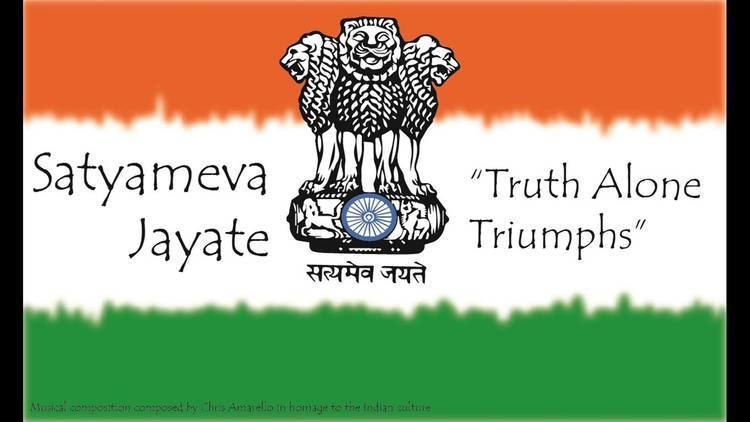 | ||
"Satyameva Jayate" (Sanskrit: सत्यमेव जयते satyam-eva jayate; lit. "Truth alone triumphs.") is a mantra from the ancient Indian scripture Mundaka Upanishad. Upon independence of India, it was adopted as the national motto of India. It is inscribed in script at the base of the national emblem. The emblem and the words "Satyameva Jayate" are inscribed on one side of all Indian currency. The emblem is an adaptation of the Lion Capital of Ashoka which was erected around 250 BCE at Sarnath, near Varanasi in the north Indian state of Uttar Pradesh. It is inscribed on all currency notes and national documents.
Contents
Origin
The origin of the motto is well-known mantra 3.1.6 from the Mundaka Upanishad. The mantra is as follows:
Popular connotations
Popular connotations also include:
The slogan was popularized and brought into the national lexicon by Pandit Madan Mohan Malaviya in 1918 when serving his second of four terms as President of the Indian National Congress.
